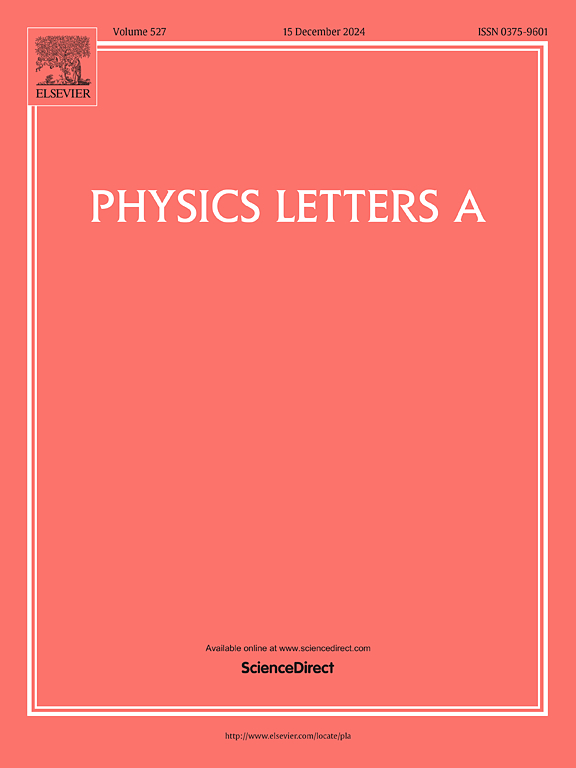作为量子时钟的特征时间算子
IF 2.6
3区 物理与天体物理
Q2 PHYSICS, MULTIDISCIPLINARY
引用次数: 0
摘要
我们考虑在Galapon(2002)[26]中引入的有界自伴随的特征时间算子T。对于具有一定生长条件的半有界离散哈密顿函数H, T在Hilbert空间的密子空间中满足正则关系[T,H]|ψ > = i_| ψ >对于|ψ >。虽然T不是协变的,但我们证明了它仍然满足总测度为零的时间集合(称为时不变集合T)中的正则关系。在T中每次时间T的邻域中,T仍然正则共轭于H,其期望值给出了参数时间。它的二维投影在T附近饱和了时间-能量不确定性关系,并与泡利矩阵σy成正比。因此,人们可以构造一个量子时钟,通过测量兼容的可观测值来告诉时间在T附近。本文章由计算机程序翻译,如有差异,请以英文原文为准。
Characteristic time operators as quantum clocks
We consider the characteristic time operator introduced in Galapon (2002) [26] which is bounded and self-adjoint. For a semibounded discrete Hamiltonian with some growth condition, satisfies the canonical relation for in a dense subspace of the Hilbert space. While is not covariant, we show that it still satisfies the canonical relation in a set of times of total measure zero called the time invariant set . In the neighborhood of each time t in , is still canonically conjugate to and its expectation value gives the parametric time. Its two-dimensional projection saturates the time-energy uncertainty relation in the neighborhood of , and is proportional to the Pauli matrix . Thus, one can construct a quantum clock that tells the time in the neighborhood of by measuring a compatible observable.
求助全文
通过发布文献求助,成功后即可免费获取论文全文。
去求助
来源期刊

Physics Letters A
物理-物理:综合
CiteScore
5.10
自引率
3.80%
发文量
493
审稿时长
30 days
期刊介绍:
Physics Letters A offers an exciting publication outlet for novel and frontier physics. It encourages the submission of new research on: condensed matter physics, theoretical physics, nonlinear science, statistical physics, mathematical and computational physics, general and cross-disciplinary physics (including foundations), atomic, molecular and cluster physics, plasma and fluid physics, optical physics, biological physics and nanoscience. No articles on High Energy and Nuclear Physics are published in Physics Letters A. The journal''s high standard and wide dissemination ensures a broad readership amongst the physics community. Rapid publication times and flexible length restrictions give Physics Letters A the edge over other journals in the field.
 求助内容:
求助内容: 应助结果提醒方式:
应助结果提醒方式:


